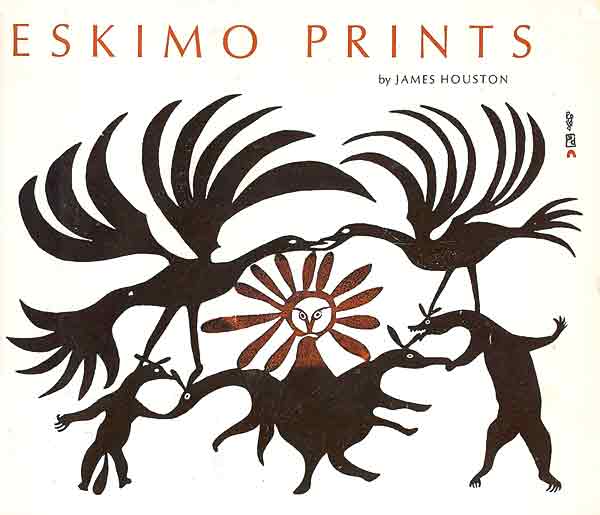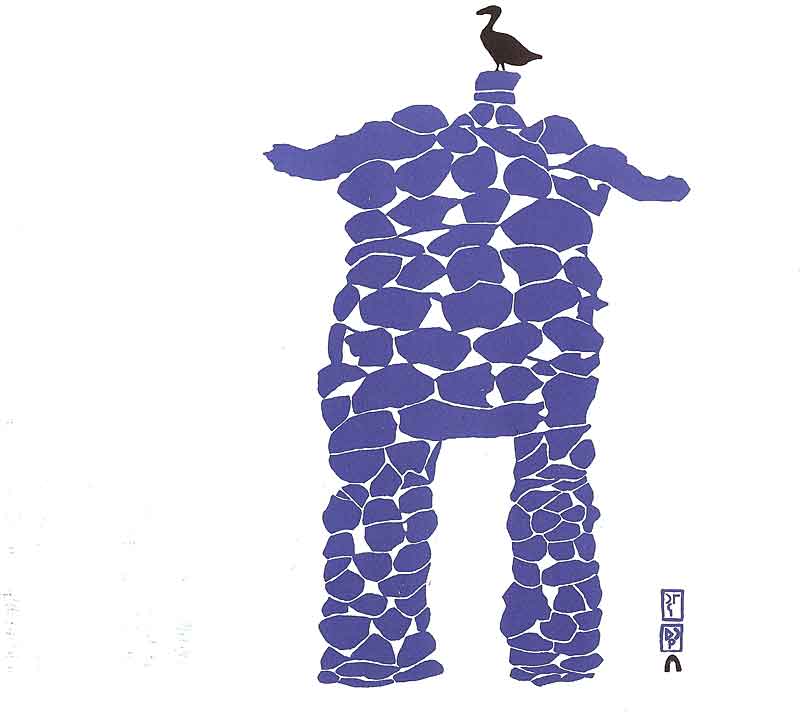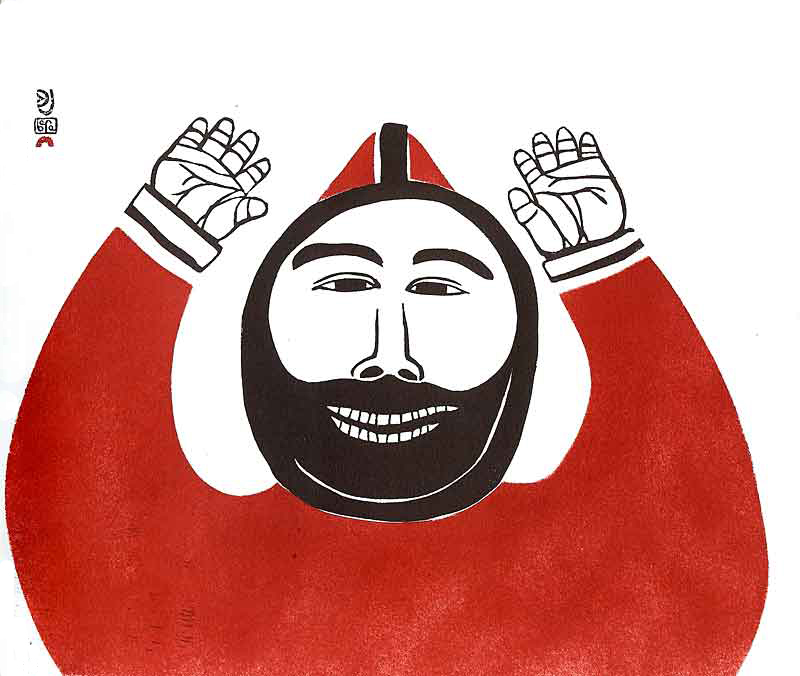Houston was a Canadian artist, whose fascination with Eskimo culture led him to spend twelve years studying and painting with the indigenous people of the Arctic. This man was no tourist - he lived in igloos, travelled by dog team and received mail only once a year. These experiences with the Eskimos brought us two huge contributions to our understanding of their art and culture. In 1949 he organised the first major exhibition of Eskimo carvings and sculpture, and in 1957. he introduced the concept of print-making to the Eskimos.
He first discovered that the Eskimos had no culture of printing when he was in conversation with a friend of his, Oshaweetok, a famous local carver. Oshaweetok was casually studying two identical packets of cigarettes, with a sailor head trademark, when he commented that it must be incredible tedious for the artist to have to sit and paint each cigarette packet with exactly the same image, over and over again.
Houston started to explain the printing process, and struggling to articulate himself in the local language, he picked up a carving and dipped it in some writing ink.
He writes:
Taking a thin piece of toilet paper, I laid it carefully on the inked surface and rubbed it lightly and quickly. Stripping the paper from the tusk, I saw that by good fortune, we had a clear negative image of Oshaweetok's incised design.
'We could do that" he said, with the instant decision of a hunter. And so we did.
The resulting prints are stunning. Taking images from their traditional culture, the Eskimos produced prints of incredible simplicity and soulfulness. They have a timeless, powerful beauty that amaze me.
This is an Inukshuk - a stone image of a man used by Caribou hunters to scare the animals into the arms of the hunters - many of the inukshuk in the Arctic are hundreds, perhaps thousands of years old.
"The Enchanted Owl."
"Joyfully I See Ten Caribou"





Agree this is a fabulous book; art work and story. I question the dipping of the tusk you mention in writer's ink. I believe they used soot from kerosene lamps—lamp black— to create the image.
ReplyDelete